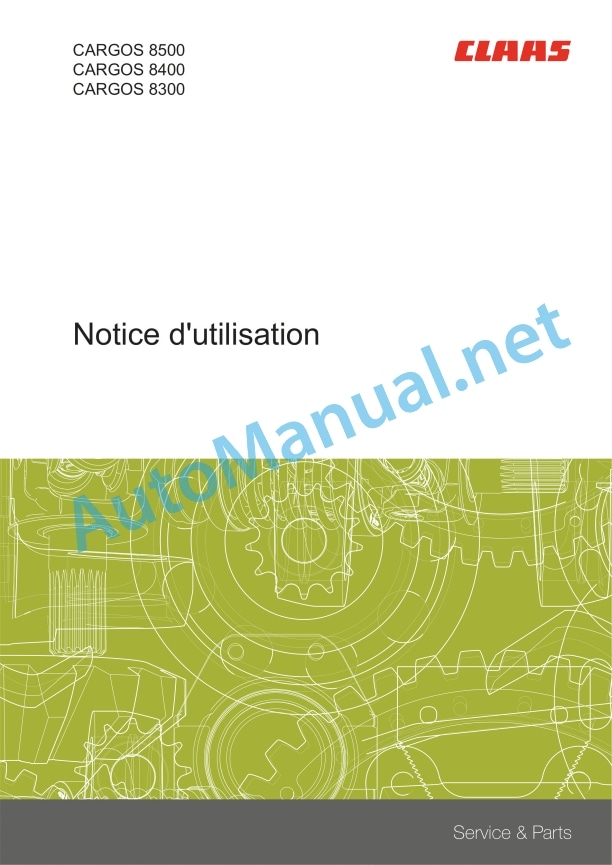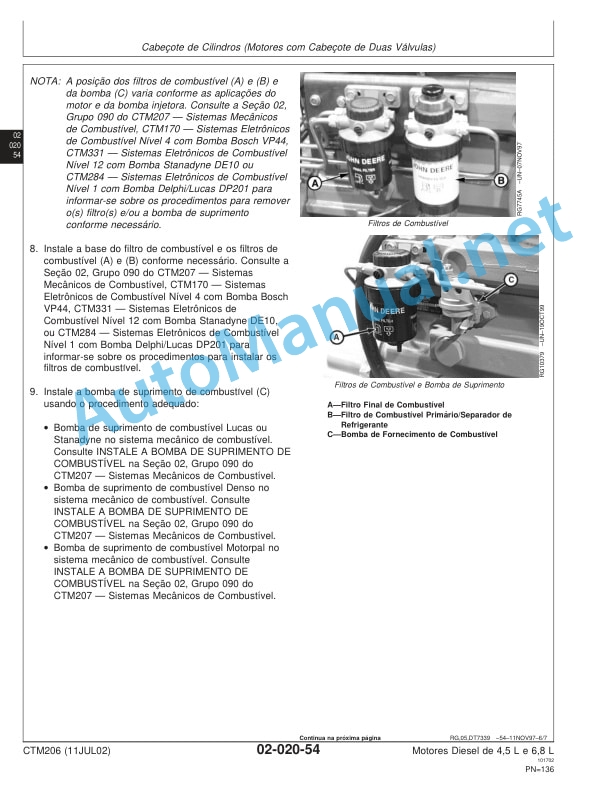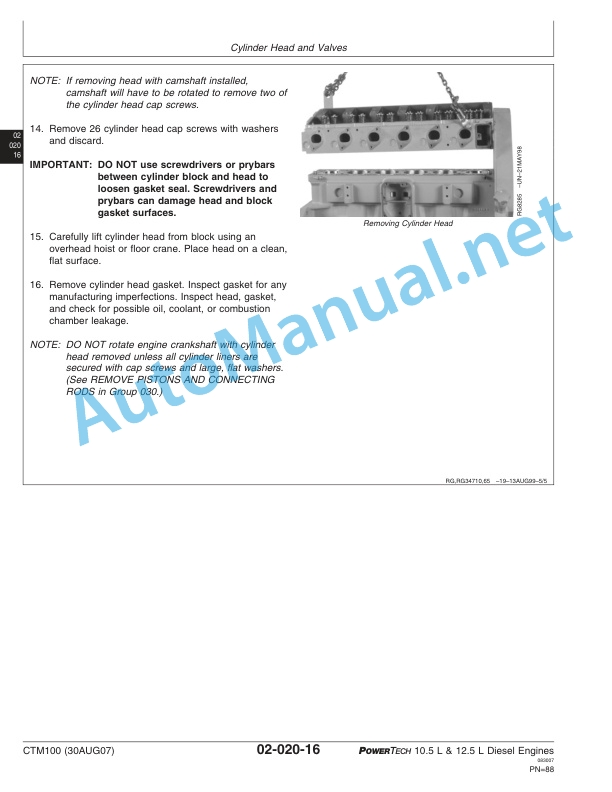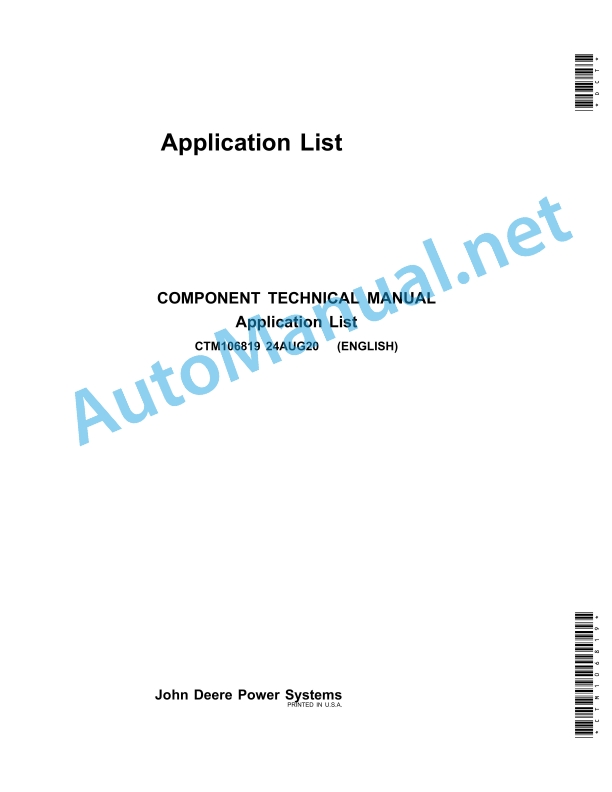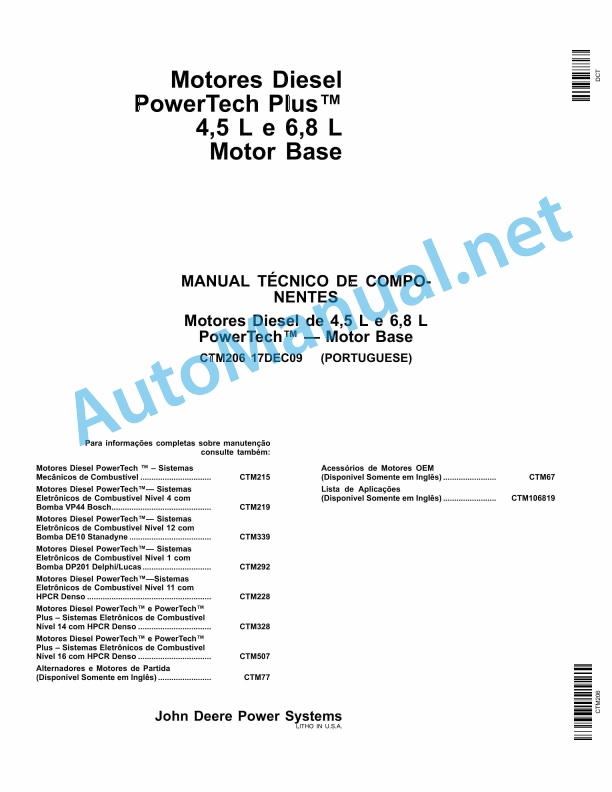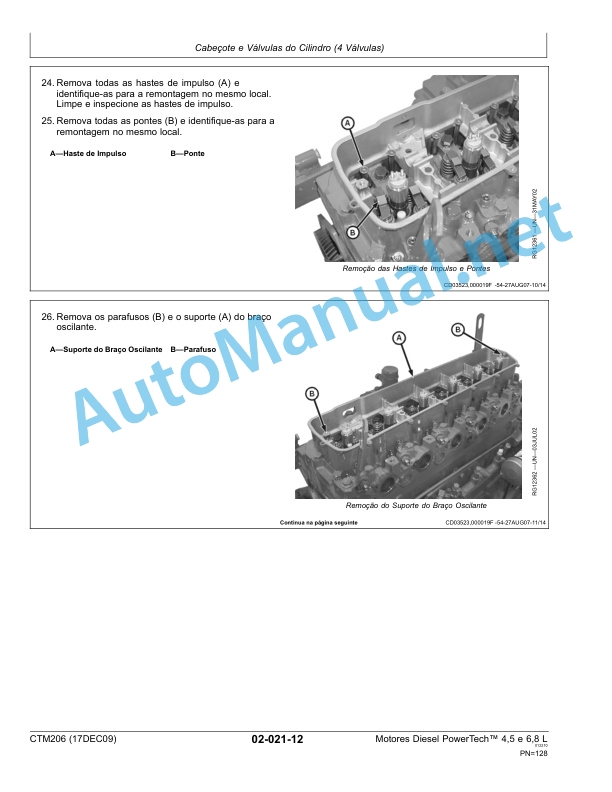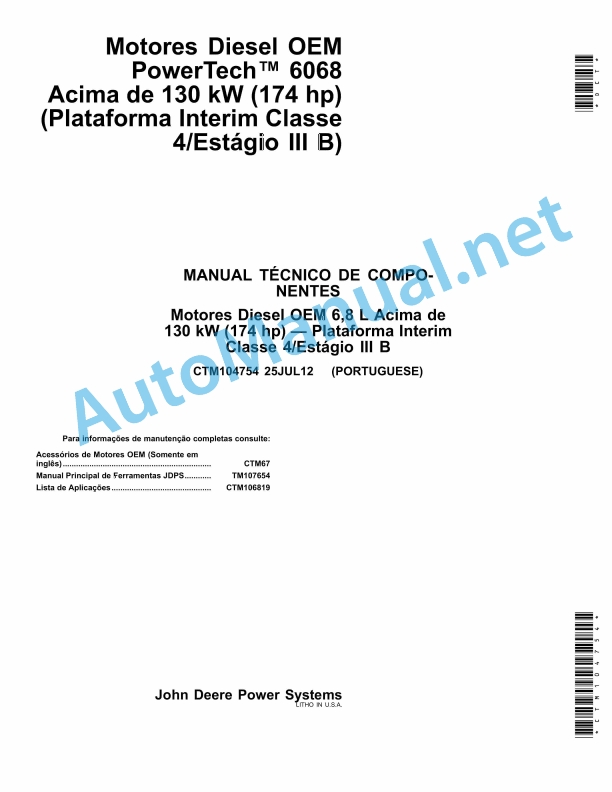Claas Cargos 8500-8300 (991) Loader Wagon Operator Manual FR
$50.00
- Model: Cargos 8500-8300 (991) Loader Wagon
- Type Of Manual: Operator Manual
- Language: FR
- Format: PDF(s)
- Size: 164 MB
File List:
00 0300 516 7.pdf
00 0300 516 7.pdf:
CARGOS 8500CARGOS 8400CARGOS 8300
Contents
1 Introduction
1.1 General instructions
1.1.1 Validity of the notice
1.1.2 Information regarding this user manual
1.1.3 Icons and notes
1.1.4 Optional equipment
1.1.5 Qualified specialist workshop
1.1.6 Notes on maintenance
1.1.7 Notes regarding warranty
1.1.8 Spare parts and technical questions
1.2 Use in accordance with instructions
1.2.1 Use in accordance with instructions
1.2.2 Reasonably foreseeable misuse
2 Security
2.1 Recognize the warnings
2.1.1 Warning pictogram
2.1.2 Signal word
2.2 Safety tips
2.2.1 Meaning of the instructions for use
2.2.2 Observe warning pictograms and warnings
2.2.3 Requirements for all people who work with the machine
2.2.4 Children at risk
2.2.5 Dangerous areas
2.2.6 Do not stand between the tractor and the machine
2.2.7 Passengers
2.2.8 Couple the tractor to the machine
2.2.9 Risk of injury due to rotating shafts
2.2.10 Constructive modifications
2.2.11 Optional equipment and spare parts
2.2.12 Controlling the tractor in operation
2.2.13 Operation only after proper commissioning
2.2.14 Technical condition
2.2.15 Risks in the event of damage to the machine
2.2.16 Respect the technical threshold values
2.2.17 Risks due to the inertia of machine elements
2.2.18 Maintain safety devices in operational capacity
2.2.19 Personal safety equipment
2.2.20 Wear suitable clothing
2.2.21 Remove dirt and loose objects
2.2.22 Prepare the machine for road travel
2.2.23 Risks when traveling on the road and in the field
2.2.24 Park the machine safely
2.2.25 Parking and storing without supervision
2.2.26 Inappropriate operating consumables
2.2.27 Safety in handling operating consumables and secondary consumable materials
2.2.28 Environmental protection and disposal
2.2.29 Prevention of fire risks
2.2.30 Very dangerous electrical discharge at overhead power lines
2.2.31 Electric shock from the electrical system
2.2.32 Liquids under pressure
2.2.33 Compressed air
2.2.34 Hot surfaces
2.2.35 Work only on the stopped machine
2.2.36 Maintenance and repair work
2.2.37 Machine elements recorded and loads
2.2.38 Danger due to welding work
2.3 Safety label
2.3.1 Structure of warning pictograms
2.3.2 Warning pictograms on the machine
3 Description of the machine
3.1 Overview and mode of operation
3.1.1 Overview of the machine with tridem axle unit
3.1.2 Overview of the machine with tandem axle unit
3.1.3 Operating mode of the machine (self-loading trailer)
3.1.4 Operating mode of the machine (transport trailer)
3.1.5 Operating mode of the articulated drawbar
Attached machine
Unhitched machine
3.2 Safety devices
3.2.1 Parking brake
3.2.2 Crutch
3.2.3 Shims
3.3 Optional equipment
3.3.1 CEMIS 700*
3.3.2 EASY on board App*
Tablet requirements (not included)
3.3.3 TELEMATICS ON IMPLEMENT*
3.3.4 TIM SPEED CONTROL*
3.3.5 ISOBUS connection cable*
3.3.6 Extension cable*
3.3.7 Hydraulic coupling ISO 16028*
3.3.8 Coupling jaw*
3.3.9 Rear part* with distribution drums removed
3.3.10 Handling trolley* of the loading unit
3.3.11 Hydraulic roof sheet*
3.3.12 Additional support wheel* of the pickup
3.3.13 Filling level sensor*
3.3.14 Fill level display*
3.3.15 LED work lights*
3.3.16 Side marker lights*
3.3.17 External load weight display*
3.3.18 Covering the loading space*
3.3.19 Canal covering*
3.3.20 Hydraulic discharge* of the pickup
3.3.21 PROFI CAM 3*
3.3.22 Battery cable*
3.3.23 Battery cable* ISOBUS
3.3.24 Site printer for ISOBUS
3.3.25 Load and torque measurement axis*
3.3.26 Load weight display*
3.3.27 Unloading with controlled torque*
3.3.28 Automatic regulation of the articulated drawbar*
3.3.29 Forced steering* electronic-hydraulic
3.4 Nameplates and vehicle identification number
3.4.1 Machine nameplate
3.4.2 Machine nameplate
3.4.3 Drawbar nameplate
3.4.4 Axle nameplate
3.4.5 Air brake nameplate
3.5 Machine information
3.5.1 Sticker on the machine
4 Control and display elements
4.1 Control elements
4.1.1 External control panel
4.1.2 Hydropneumatic undercarriage ball valves*
Ride Height
Suspension
4.2 Display elements
4.2.1 Pickup relief pressure gauge*
4.2.2 PROFI CAM 3 screen*
4.3 Terminal menu structure
4.3.1 Representation variants
4.3.2 Overview of the display
4.3.3 Overview of
4.3.4 Menu
Description of the programmable keys in the
Description of symbols on the data field
4.3.5 Menu
Description of the programmable keys in the
Description of symbols on the data field
4.3.6 Menu
Description of the function keys in the
Description of symbols on the data field
Description of symbols on data field
4.3.7 Menu
Description of the programmable keys in the
Description of symbols on the data field
4.3.8 Menu
Description of the programmable keys in the
Description of symbols on the data field
4.3.9 Menu
Description of the programmable keys in the
Description of symbols on the data field
4.3.10 Menu
Description of the programmable keys in the
Description of the symbols in the
Description of the symbols in the
4.3.11 Menu
Description of the function keys in the
Description of the symbols in the data field
4.3.12 Menu
Description of the function keys in the
Description of the icons in the data field
4.3.13 Menu
Description of the programmable keys in the
Description of the symbols in the data field
4.3.14 Menu
Description of the programmable keys in the
Description of the symbols on the
4.3.15 Menu
Description of the programmable keys in the
Description of the symbols in the data field
4.3.16 Menu
Description of the programmable keys in the
Description of symbols on the data field
4.3.17 Status bar
Description of the
5 Technical characteristics
5.1 CARGOS 8500
5.1.1 Dimensions
5.1.2 Dimensions of the loading space cover*
5.1.3 Wall extension dimensions*
5.1.4 Weight
Tridem axle unit* 30 t
Tridem axle unit* 27 t
Tandem axle unit* 20 t
Tandem axle unit* 18 t
5.1.5 Pickup
5.1.6 Cutting deck
5.1.7 Tire pressure
5.1.8 Tractor requirements
5.1.9 Electrical system
5.1.10 PTO regime
5.1.11 Sound pressure level
5.2 CARGOS 8400
5.2.1 Dimensions
5.2.2 Dimensions of the loading space cover*
5.2.3 Wall extension dimensions*
5.2.4 Weight
Tandem axle unit* 20 t
Tandem axle unit* 18 t
5.2.5 Pickup
5.2.6 Cutting deck
5.2.7 Tire pressure
5.2.8 Tractor requirements
5.2.9 Electrical system
5.2.10 PTO regime
5.2.11 Sound pressure level
5.3 CARGOS 8300
5.3.1 Dimensions
5.3.2 Dimensions of the loading space cover*
5.3.3 Wall extension dimensions*
5.3.4 Weight
Tandem axle unit* 18 t
5.3.5 Pickup
5.3.6 Cutting deck
5.3.7 Tire pressure
5.3.8 Tractor requirements
5.3.9 Electrical system
5.3.10 PTO regime
5.3.11 Sound pressure level
5.4 Operating consumables
5.4.1 Lubricants
6 Preparing the machine
6.1 Stop and immobilize the machine
6.1.1 Disconnect the tractor and the machine and secure them
6.2 Assemble the machine
6.2.1 Install the cardan shaft on the machine
6.2.2 Connect the ISOBUS connection cable*
6.2.3 Insert the wedges into the support
6.3 Access workstations and maintenance stations
6.3.1 Entering the cargo area
6.3.2 Leaving the cargo area
6.3.3 Front protective guards
Open the front protective covers
Close the front protective covers
6.3.4 Left side rear protective guards
Open the left side rear protective covers
Close the left side rear protective guards
6.4 Adapt the tractor
6.4.1 Check the tractor PTO shaft protection device
6.4.2 Tractor hitch for Cuna F3 eyelet
6.4.3 Coupling to the tractor for electronic-hydraulic forced steering*
6.4.4 Harmonize the tractor’s pneumatic braking system
6.4.5 Install the COMMUNICATOR II*
6.4.6 Install the OPERATOR*
6.5 Using the tractor terminal
6.5.1 Using the tractor terminal
6.5.2 Tractor terminal and Joystick
6.5.3 Using the COMMUNICATOR II* and the Joystick
6.5.4 Changing the FENDT Vario tractor terminal
6.6 Adapt the machine
6.6.1 Checking the length of the cardan shaft
Shortest working position of the PTO shaft
Longest working position of the PTO shaft
6.6.2 Adapting the length of the cardan shaft
6.6.3 Adapt the hydraulic system
Closed hydraulic system (constant pressure or load demand)
Open hydraulic system (standard system)
6.6.4 Adjust the articulated drawbar
Adjust the left side piston rod
Adjust the right side piston rod
6.6.5 Adjust the height of the undercarriage*
Install the right side undercarriage
Install the left side undercarriage
Lower the right side undercarriage
Lower the left side undercarriage
6.6.6 Change the position of the tiller sensor lever*
6.6.7 Adjust electronic-hydraulic forced steering*
Check basic setting
Adapt the tie rod
Avoid hyperextension of the sensor
6.6.8 Adjust the cutting bucket with the central adjustment*
Fully open the cutting frame
Adjust the working position / bring the cutting frame to the tamping position
Lock the cutting frame
6.6.9 Adjusting the working height of the pickup
6.6.10 Adjust pickup discharge*
6.6.11 Adjust the baffle
6.6.12 Remove or install the loading unit and cutting unit
6.6.13 Remove the timing drum unit*
6.7 Hitch the machine
6.7.1 Connect the lighting
6.7.2 Connect CEMIS 700*
6.7.3 Connect the COMMUNICATOR II*
6.7.4 Connect the OPERATOR*
6.7.5 Connect the tablet*
6.7.6 Connect the battery cable* ISOBUS
6.7.7 Connect the battery cable* ISOBUS
6.7.8 Connect the battery cable* ISOBUS
6.7.9 Connect the hydraulic flexible lines
Connect the hydraulic hose lines only when the hydraulic system is closed (with Load-Sensing)
Connect the hydraulic flexible lines when the hydraulic system is open (without Load-Sensing)
Connect the hydraulic flexible line P1
6.7.10 Connect the hydraulic flexible lines of the cargo area cover*
6.7.11 Remove the safety lock*
6.7.12 Hitch the articulated drawbar
6.7.13 Raise the stand
6.7.14 Connecting the electronic-hydraulic forced* steering
6.7.15 Install the cardan shaft
6.7.16 Connect the air brake*
6.7.17 Connect the hydraulic brake*
6.7.18 Connect the automatic uncoupling brake*
6.7.19 Remove the wedges
6.7.20 Release the parking brake
6.8 Uncouple the machine
6.8.1 Activate the parking brake
6.8.2 Place the wedges
6.8.3 Pivot the stand downwards
6.8.4 Remove the cardan shaft
6.8.5 Uncouple the articulated drawbar
6.8.6 Disconnect the electronic-hydraulic forced* steering
6.8.7 Attaching the safety lock*
6.8.8 Disconnect the hydraulic flexible lines at the tractor
6.8.9 Disconnect the flexible hydraulic lines from the loading space cover from the tractor*
6.8.10 Disconnect the hydraulic brake* at the tractor
6.8.11 Disconnect the automatic uncoupling brake*
6.8.12 Disconnect the air brake*
6.8.13 Disconnect lighting
6.8.14 Unplug CEMIS 700*
6.8.15 Unplug the COMMUNICATOR II*
6.8.16 Unplug the OPERATOR*
6.8.17 Unplug the tablet*
6.9 Prepare for road travel
6.9.1 Bring the machine to transport position
6.9.2 Connect the hydropneumatic undercarriage* suspension
6.10 Prepare the work
6.10.1 Disconnect the suspension from the hydropneumatic undercarriage*
6.11 Load the machine
6.11.1 Maneuver the machine
6.11.2 Loading the machine and securing it
7.1 ISOBUS and OPERATOR control
7.1.1 Description
7.2 CEMIS 700
7.2.1 CEMIS 700* recommendations
7.2.2 To use the CEMIS 700*
7.2.3 Call up the menu
7.2.4 Call up submenu
7.3 COMMUNICATOR II
7.3.1 COMMUNICATOR II* recommendations
7.3.2 To use the COMMUNICATOR II*
7.3.3 Call up the menu
7.3.4 Call up submenu
7.4 OPERATOR
7.4.1 OPERATOR* recommendations
7.4.2 To use the OPERATOR*
7.5 EASY on board App
7.5.1 Recommendations EASY on board app*
7.5.2 For using the EASY on board app*
7.5.3 Call up the menu
7.5.4 Call up submenu
7.6 Settings for work
7.6.1 Connect the terminal
7.6.2 Starting the control program
7.6.3 Create a site
7.6.4 Connect and disconnect data entry
7.6.5 Activate TIM SPEED CONTROL*
7.6.6 Adjust the forward speed TIM SPEED CONTROL*
Adjust the working speed
Adjust headland speed
7.6.7 Connect and disconnect the load* with controlled torque
7.6.8 Change moving floor speed for loading
7.6.9 Change roof sheet pressing pressure*
7.6.10 Connecting and disconnecting the silage additive supply*
7.6.11 Connect and disconnect automatic jam clearing*
7.6.12 Set automatic curb weight measurement
7.6.13 Connect and disconnect unloading* with controlled torque
7.6.14 Modify the moving floor speed for unloading
7.6.15 Change the opening angle of the rear hatch
7.6.16 Connect and disconnect the automatic residue emptying system
7.6.17 Change the pause time between two lubrication intervals*
7.6.18 Change self-steering axle settings
Adjust axle lock according to speed
Set silo mode
7.6.19 Change electronic-hydraulic forced* steering settings
Set silo mode
Adjust adaptive joint angle warning
Save the adaptive joint angle warning end stops
Set dynamic steering line offset
7.6.20 Display and modify articulated drawbar positions
Change the articulated drawbar assignment value
7.6.21 Connecting and disconnecting the automatic regulation of the articulated drawbar*
7.6.22 Reversing the moving floor drive
7.6.23 Connect work lighting
Connect work lighting individually
7.6.24 Disconnect work lighting
Disconnect the headlights individually
7.6.25 Raise the lifting axle*
7.6.26 Lower the lifting axle*
7.6.27 Manually use electronic-hydraulic forced* steering
Enable offset mode
Activate axle lock mode
7.6.28 Use other electronic-hydraulic forced steering functions*
Road mode
Axle lock mode
Offset mode
Manual mode
7.6.29 Lock the self-steering axle
7.6.30 Unlock the self-steering axle
7.6.31 Connecting and disconnecting the external load weight display*
7.6.32 Restore manufacturer settings
7.6.33 Load the management program again
7.7 Using the
7.7.1 Available functions
7.7.2 COMMUNICATOR II application example*
7.7.3 Example of AXION / ARION application
7.7.4 FENDT application example
7.8 Traveling on the road
7.8.1 Traveling on public roads
7.9 Work
7.9.1 To be respected when traveling in the field
7.10 Control the recovery of the loading space
7.10.1 Opening the cargo area covers*
7.11 Automatically load the machine
7.11.1 Enable autoload
Call via the
Call via the
7.11.2 Connect the PTO
7.11.3 Load without knives
7.11.4 Activate automatic regulation of the articulated drawbar*
7.11.5 Connecting and disconnecting the moving floor drive
Connect the moving floor drive
Disconnect the moving floor drive
Adapt the threshold value
Adjust the pressing pressure*
7.11.6 Briefly activate the moving floor
7.11.7 Raise to headland position
7.11.8 Lower into working position
7.11.9 Controlling the filling process
7.11.10 Complete autoload
7.11.11 Start TIM SPEED CONTROL*
On the headland
7.11.12 Adapt the TIM SPEED CONTROL* regulation according to the forage conditions
7.11.13 Terminate TIM SPEED CONTROL*
Close via order
Close in case of pickup blockages
7.12 Automatically unload the machine
7.12.1 Enable automatic unloading
Call via the
Call via the
7.12.2 Unloading with controlled torque*
Automatically connect and disconnect the moving floor drive
7.12.3 Connecting and disconnecting the moving floor drive
Connect the moving floor drive
Disconnect the moving floor drive
7.12.4 Changing the moving floor speed
Enter the value in the input field
Change the speed using the keys
7.12.5 Automatic emptying of the remainder of the machine
Connect the automatic residue emptying system
Disconnect the automatic emptying of the remainder
7.12.6 Manual emptying of the remainder of the machine
Install the swivel moving floor
Lower the rotating moving floor
7.12.7 Complete automatic unloading
7.12.8 Start manual empty weight measurement
7.13 Automatically bring the machine into transport position
7.13.1 Activate transport position after loading
7.13.2 Activate transport position after unloading
7.14 Manually load the machine
7.14.1 Open the roof plate* from the front for loading (for the initial chopping pass)
7.14.2 Close the roof sheet*
7.14.3 Bring the machine to the loading position
7.14.4 Lowering the pickup
7.14.5 Connecting the pickup drive
7.14.6 Connect the PTO
7.14.7 Connect the moving floor drive
7.14.8 Disconnect the moving floor drive
7.14.9 Manually raise to headland position
Lower into working position
7.14.10 Disconnect the PTO
7.14.11 Disconnect the pickup drive
7.15 Manually unload the machine
7.15.1 Bring the machine to the unloading position
7.15.2 Connect the distribution drums*
7.15.3 Open the rear hatch
7.15.4 Connect the moving floor drive
7.15.5 Change moving floor speed
7.15.6 Disconnect the distribution drums*
7.15.7 Close the rear hatch
7.15.8 Disconnect the moving floor drive
7.15.9 Start manual empty weight measurement
7.16 Manually bring the machine into transport position
7.16.1 Close the roof sheet*
7.16.2 Closing the cargo area covers*
7.16.3 Bring the articulated drawbar to the transport position
7.16.4 Activate hydraulic drawbar suspension*
7.17 Complete the job
7.17.1 Display job site data and print it
Counter depending on the site
Counters independent of the site
Print job site data*
7.17.2 Disconnect the terminal
7.18 Initialize
7.18.1 Application cases
7.18.2 Learn the end stops of the articulated drawbar
7.18.3 Learn the roof sheet end stops*
7.18.4 Learn the rear hatch end stops
7.18.5 Initialize unloading with controlled torque*
Error during unloading initialization with controlled torque
7.18.6 Learn the pickup end stops
Error when learning the pickup position:
7.18.7 Learn the cutting bucket end stops
7.18.8 Learn the end stops of the swivel moving floor
7.18.9 Learn rectilinear movement of electronic-hydraulic forced* steering
7.18.10 Initialize electronic-hydraulic forced* steering
Learn rectilinear movement
7.18.11 End of travel stops learning error
8 Faults and solutions
8.1 Overview of faults
8.1.1 Overview of machine faults
8.1.2 Automatic regulation of the articulated drawbar*
8.2 Electrical and electronic system
8.2.1 The control cannot be connected
8.2.2 The control cannot be connected
8.2.3 Overview of TIM SPEED CONTROL* faults
8.3 Chassis
8.3.1 Change the wheel
8.4 Emergency response
8.4.1 Work steps before emergency order
8.4.2 Manually operate the hydraulic valves
8.5 ISOBUS error messages
8.5.1 Maintenance alarm
8.5.2 Alarm messages
8.5.3 Sensor mounting position
8.5.4 Sensor error
8.5.5 Distribution drum speed sensor error* during unloading
8.5.6 Undervoltage
8.5.7 PTO error
8.5.8 Initialization error
8.5.9 Pickup RPM error
8.5.10 Error, forced steering* electronic-hydraulic
8.5.11 Error code table
8.5.12 Error code table, electronic-hydraulic forced steering*
8.6 Power group
8.6.1 Automatically clear jam in feed channel
8.6.2 Manually clear jams in the feed channel
8.6.3 Opening and closing the cutting bucket
Open cutting bucket
Close the cutting bucket
9 Maintenance
9.1 Overview of maintenance frequencies
9.1.1 Before harvest
9.1.2 After the first 10 hours of operation
9.1.3 After the first 50 hours of operation
9.1.4 After the first 200 operating hours
9.1.5 Every 8 operating hours or every day
9.1.6 Every 20 operating hours
9.1.7 Every 50 operating hours
9.1.8 Every 100 operating hours
9.1.9 Every 250 operating hours
9.1.10 Every 500 operating hours or every year
9.1.11 Every 1000 operating hours or every 2 years
9.1.12 Every 5 years
9.1.13 After harvest
9.2 Gearbox
9.2.1 Check the tightness of the gearbox
9.2.2 Check the main gearbox oil level
9.2.3 Replace the main gearbox oil
9.2.4 Check rotor gearbox oil level
9.2.5 Replace rotor gearbox oil
9.2.6 Check the oil level of the rear gearbox of the timing drums*
9.2.7 Replace the timing drum rear gearbox oil*
9.2.8 Check the gearbox oil level before the timing drums*
9.2.9 Replace gearbox oil before timing drums*
9.2.10 Check the oil level of the moving floor gearbox
9.2.11 Replacing the moving floor gearbox oil
9.3 Torque limiter, overload coupling
9.3.1 Check overload coupling
9.3.2 Check overload coupling
9.4 Cardan shaft
9.4.1 Maintenance of cardan shafts
9.4.2 Remove and install the cardan shaft protection
9.5 Chassis
9.5.1 Check tire pressure
9.5.2 Check the wheel nuts
9.5.3 Check wheel bearing clearance
9.5.4 Replacing hub bearing grease
9.5.5 Check the steering hinges of the steering axle
9.5.6 Check the gas shock absorber of the steering axle
9.5.7 Check the shock absorbers
9.5.8 Check the steering axle master cylinders
9.5.9 Check the steering rod
9.6 Mechanical undercarriage 10 t
9.6.1 Check axle suspension
9.6.2 Check the swing arm
9.6.3 Check the reaction rods
9.6.4 Check leaf shock absorber screws
9.7 Mechanical undercarriage 9 t
9.7.1 Check axle suspension
9.7.2 Checking the swing arm
9.7.3 Check the reaction rods
9.7.4 Check leaf shock absorber screws
9.8 Hydropneumatic undercarriage
9.8.1 Check structure alignment
9.8.2 Check the fixing of the cylinder*
9.8.3 Check axle suspension*
9.8.4 Check hinge pins*
9.8.5 Check the machine suspension*
9.8.6 Check leaf springs
9.9 Brake
9.9.1 Carry out a function check of the braking system
9.9.2 Carry out a visual check of the braking system
9.9.3 Check the brake pads
9.9.4 Check the brake lever stroke of the air brake*
Check brake lever travel
Adjust the service brake adjustment lever
9.9.5 Drain the water from the compressed air tank*
Clean the water drain valve
9.9.6 Check the brake cylinder
9.9.7 Clean the line air filter*
9.10 Coupling device
9.10.1 Check the crutch screws
9.10.2 Check the coupling of the articulated drawbar
Ball hitch
Hitch eye (50mm ring)
Towing eyelet (Cuna F3)
9.10.3 Check the forced steering hitch*
9.11 Workouts
9.11.1 Perform chain maintenance
9.11.2 Tighten the pickup drive chain
9.11.3 Check the timing drum drive chains*
9.11.4 Tighten the distribution drum drive chains*
9.11.5 Tighten the distribution drum drive chains*
9.12 Hydraulic system
9.12.1 Relieve hydraulic system pressure
9.12.2 Check hydraulic flexible lines
9.12.3 Replace the hydraulic oil filter
9.12.4 Check the pressure accumulator
9.13 Electrical and electronic system
9.13.1 Adjust the timing drum speed sensor
9.13.2 Adjust the full trailer indicator sensor
9.13.3 Adjust the full trailer indicator sensor
9.13.4 Adjust the rear hatch position sensor
9.13.5 Adjust the rear hatch sensor
9.13.6 Adjust the rear hatch sensor
9.13.7 Adjusting the pick-up speed sensor
9.13.8 Check lighting
9.13.9 Checking the headlights
9.14 Pickup
9.14.1 Check the wheels
9.14.2 Checking the elastic teeth
9.14.3 Check the screw connections of the elastic teeth
9.15 Cutting bucket
9.15.1 Checking the knife
9.15.2 Remove the knives
9.15.3 Place the knives
9.15.4 Adjust the distance from the tip of the knives to the rotor wall
Adjust the gap
9.15.5 Adjust the preload of the knives
9.15.6 Adjust the preload of the knives
9.15.7 Adjusting the cutting bucket
Eliminate tension in the cutting bucket
Shift the cutting bucket to the right
Shift the cutting bucket to the left
Adjust guide screws left and right
9.15.8 Adjust the cutting bucket transfer plate
9.15.9 Adjust the scraper box
9.15.10 Adjust the scraper
9.15.11 Check rotor teeth
9.15.12 Clean the cutting bucket
9.16 Rear hatch
9.16.1 Adjusting the rear hatch lock
9.16.2 Adjusting the rear hatch lock
9.16.3 Adjust the rear hatch gap
9.17 Moving floor
9.17.1 Check conveyor bars
9.17.2 Check and tighten the moving floor chains
Check the moving floor chains
Tighten the moving floor chains
9.17.3 Removing the links
9.18 Assembled parts / Machine casing
9.18.1 Check the shims
9.18.2 Dispose of leftover harvest
Cutting bucket
Workouts
Rear hatch
Rear hatch cylinder
Hood and wheel housing
Undercarriage and compressed air system*
Undercarriage cylinder*
9.18.3 Check the mounting hardware
9.18.4 Cleaning the machine
9.18.5 Precautionary measures for the machine
9.19 Lubrication plan
9.19.1 Lubricate the lubrication points every 20 operating hours
9.19.2 Lubricate the lubrication points every 50 operating hours
9.19.3 Lubricate the lubrication points every 200 operating hours
9.19.4 Lubricate the lubrication points every 500 operating hours
10 Decommissioning and disposal
10.1 General instructions
10.1.1 Decommissioning and disposal
11 CE declaration of conformity
11.1 CARGO 8500 / 8400 / 8300
11.1.1 Declaration of conformity for EEC
12 Technical terms and abbreviations
12.1 Terms and explanations
12.1.1 Abbreviations
12.1.2 Abbreviations TIM SPEED CONTROL*
12.1.3 Technical terms
John Deere Repair Technical Manual PDF
John Deere Repair Technical Manual PDF
John Deere Repair Technical Manual PDF
John Deere Repair Technical Manual PDF
John Deere 16, 18, 20 and 24HP Onan Engines Component Technical Manual CTM2 (19APR90)
John Deere Repair Technical Manual PDF
John Deere Repair Technical Manual PDF
John Deere Repair Technical Manual PDF
John Deere Application List Component Technical Manual CTM106819 24AUG20
John Deere Repair Technical Manual PDF
John Deere Repair Technical Manual PDF


